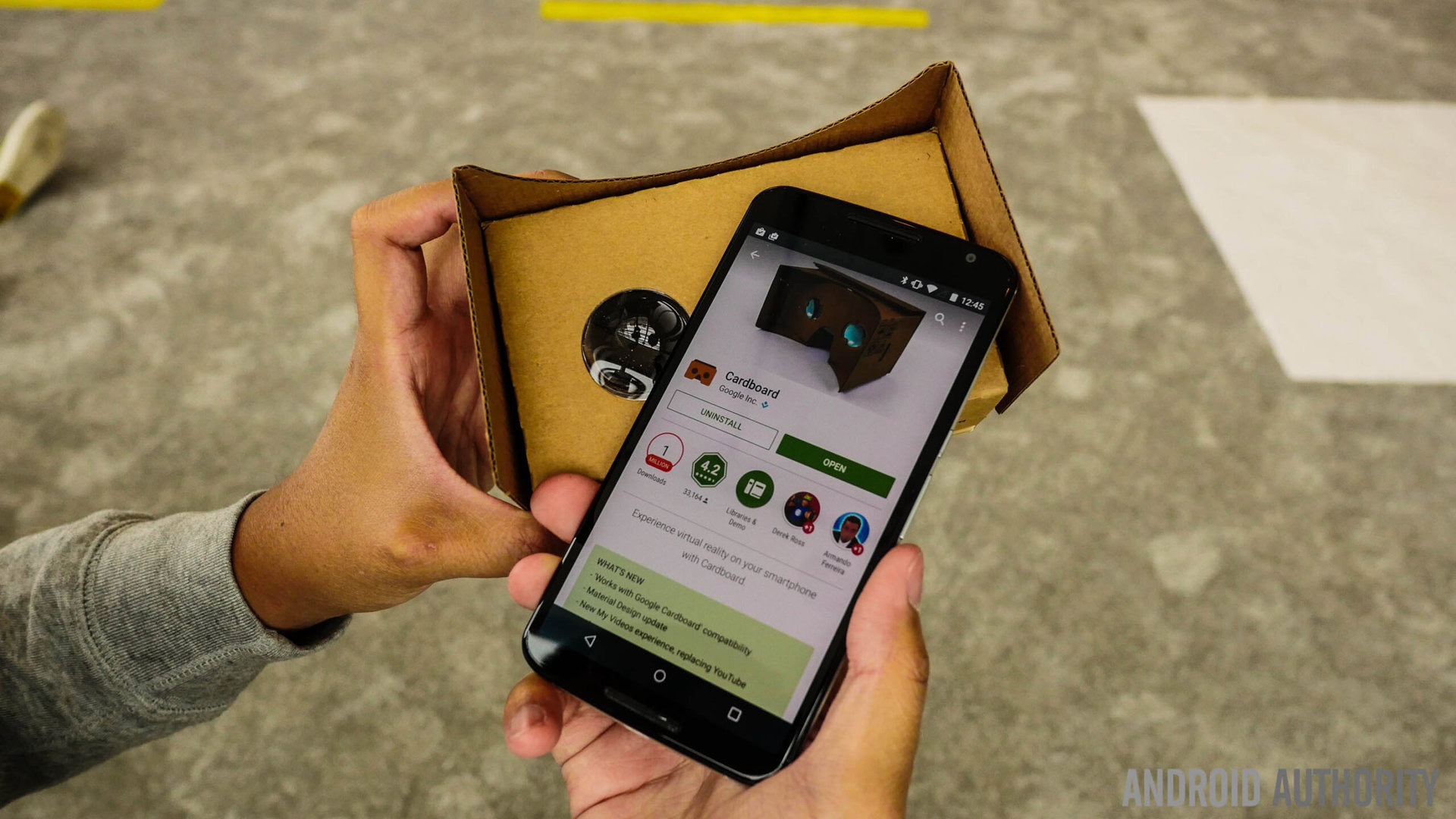Affiliate links on Android Authority may earn us a commission. Learn more.
Google's plan to help make VR a reality
Published onJune 4, 2015

It’s beginning to look like we’re on the verge of an exciting new technology that has the potential to transform the entertainment industry. An immersive experience that will whisk us away to foreign lands, put us right in the action for live events, and maybe even take us beyond the stars. If virtual reality lives up to its promise, we could see mass adoption in the next few years.
It’s by no means a foregone conclusion, but one company doing its part to bring VR to the world is Google. Last year we had Cardboard, this year, at I/O, Google unveiled Jump. There’s a plan at work here to democratize virtual reality, and make sure we’re all on board.
Building momentum
The idea of virtual reality has been around for years. It failed to live up the hype in the 80’s and 90’s, but technology has really moved on since then. Few envisaged the rise of mobile when the personal computing revolution set out to equip every person on the planet with a computer, but that’s the way we’re headed. And we’re still finding new ways to use our increasingly powerful smartphones.
This time around, virtual reality is already being billed as more than just games. It’s not just about exciting adventures to the bottom of the sea or the planet Mars, either. We might use VR to visit famous landmarks, to travel back in time, to attend live music events, or just to hang out with friends, or visit distant family.
As it stands, several big players are working on VR headsets right now. There’s the Facebook-backed Oculus, Sony, HTCand Valve, Samsung, Microsoft, and a multitude of smaller players, ripe for acquisition if they should succeed in creating the definitive experience. Then there’s Google. It’s not yet clear what role Android will play as virtual reality takes off, but Google is determined to be involved. To that end it has developed two important initiatives that make VR accessible by tearing down the main barrier to entry for users and developers – the admission price.
Cardboard
Forget about dropping hundreds of dollars on a prototype, Cardboard allows you to transform your phone into a crude VR headset for next to nothing. There’s a new viewer that fits phones with screens up to 6 inches in size, and it’s very easy to assemble. The Cardboard SDK now supports iOS, as well as Android, and there are hundreds of apps for Google Cardboard in the Play Store already.
There’s little doubt that the wave of VR headsets in development will offer a more polished and immersive experience, but most of them will have to be hooked up to your console or computer. All of them are going to be relatively expensive. If you want a taste of what VR is all about right now, and you don’t have money to spend, Cardboard is a great way to dip your toe in the shallow end.
Jump
There’s another major problem that VR has to overcome in order to hit the mainstream, and that’s content. If you require an expensive setup in order to shoot VR footage, then how many people are going to produce VR experiences? Just like 3D and 4K, many people are not going to rush out and buy VR headsets until there’s plenty of enticing content.
Enter Jump, a complete platform for VR that combines affordable camera rigs, 360-degree video capture, and a platform to share the resulting footage. If you want to get started with virtual reality right now, Jump looks like the easiest way. The fact that YouTube is already so popular, and familiar, makes it ideal for sharing VR video, whether you want to create something privately for friends and family, or try to hit the big time with a VR channel.
Creatives can dive straight in and get their hands dirty, without having to outlay a small fortune on a dev kit, or license an SDK. And because it’s YouTube, you can be pretty confident that the vast majority of VR headsets in the works will support it.
Expeditions
For anyone who thinks VR is all about gaming, the Expeditions initiative should tell you otherwise. Interested schools can sign up for the program, which enables a teacher to use a tablet to control a virtual reality experience on Cardboard headsets which students wear. The teacher can effectively sync and lead the adventure to the virtual world. It could be a field trip to China, a museum, or another planet. The potential is enormous.
Project Tango

Another Google project that could yet play a role in the growing VR field is Tango. It’s really a platform for augmented reality, the idea being that sensors in your smartphone can track the environment around you in real-time and blend virtual objects and characters into it. Google clearly feels it has legs, because the project has graduated from ATAP, and interested parties can now get their hands on developer devices, for just over $500.
Within the next few years, we may find the depth and motion tracking cameras Tango needs are standard inclusions in the latest smartphones. Augmented reality has all sorts of potential applications including games, movies, navigation, interactive guides, and remote assistance. It’s possible the boundary between VR and AR will blur further as they develop.
Ready for VR?
[related_videos align=”center” type=”custom” videos=”613270,613279″]
The general mood around VR is optimistic. It really seems to have a lot of momentum right now. There’s a sense that developers are taking their time to craft the right experience. The backing of so many major players boosts its chances. But there are still problems to address. The issue of drift and the need for individual calibration is a turn off, as is motion sickness for unfortunate sufferers. A platform war also looks inevitable, as hardware manufacturers try to entice consumers with exclusive content. What will the definitive experience be?
By offering an easy point of entry, Google is helping to spur the movement on. Making VR affordable and accessible is an important step, and you could draw parallels with what Google did for the mobile industry through the release of Android as an open source platform. Ultimately, the faster developers create new experiences and get people trying them and talking about them, the faster we’ll reach the point where virtual reality is a must-have technology.